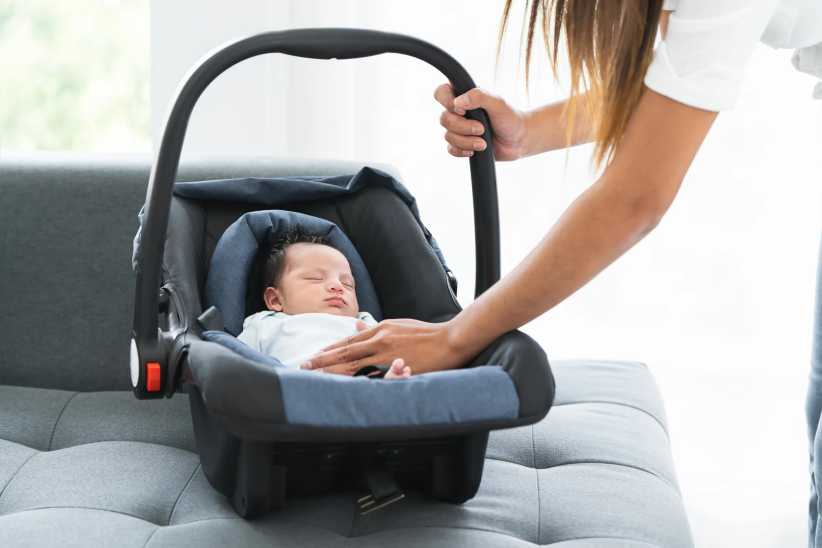 I never thought I’d attend a birthing class. My preconceived notions were that it was a waste of time—unnecessary for women who read the right literature and too keenly focused on learning how to do controlled breathing. Nevertheless, I found myself reading about the Bradley Method one night and came across what I thought was a good fit: A partner-involved class for “thinking couples.” Six weeks later, I’m happy to report that the course was worth every minute. Here are the top 10 things I learned that will hopefully come in use on my labor day.
I never thought I’d attend a birthing class. My preconceived notions were that it was a waste of time—unnecessary for women who read the right literature and too keenly focused on learning how to do controlled breathing. Nevertheless, I found myself reading about the Bradley Method one night and came across what I thought was a good fit: A partner-involved class for “thinking couples.” Six weeks later, I’m happy to report that the course was worth every minute. Here are the top 10 things I learned that will hopefully come in use on my labor day.
1. You probably shouldn’t rush to the hospital.
Movies and television had my husband and me thinking that driving to the hospital is some sort of beat-the-clock mad dash as soon as contractions are strong. But we learned in class that it’s smarter to stay home as long as possible for most women in order to get more fully dilated. In fact, the first stage of labor can last as long as 12 hours and the second stage as long as 6. And that’s all before pushing!
2. Your water may never break.
Again, pop culture is mostly to blame for our assumption that labor starts with a big rush of water. For the majority of women, the bag of waters doesn’t break until well into labor, and for many, it’s only a small trickle of fluid, not a tsunami. The doctor may offer to break it manually, but it’s usually fine to let the birth progress naturally.
3. Avoiding bed is usually a good idea.
The image of childbirth I had in my mind was of a woman lying in bed, screaming and moaning as she endured untold pain. But our instructor informed us that labor can slow down or stop entirely if you’re on your back. The best positioning isn’t reclined on a mattress but rather standing up, seated, or squatting. In other words, anything that helps gravity do its job of pulling the baby from your body.
4. The bathroom might be your new best friend.
In addition to gravity working its magic, going to the bathroom frequently is apparently a good idea to help labor progress. Our instructor informed us that a full bladder can keep the baby from moving down. Logically, it makes total sense, so I’m inclined to go with it!
5. Doing nothing may be an option.
No matter what kind of birth you imagine for yourself, informed consent is an important part of the process. It means your doctor tells you not only the benefits and risks of the proposed treatment (anything from Pitocin to a C-section), but he or she also gives alternatives and explains what would happen if you do nothing for the moment. The option to do nothing if no risk is involved should always be presented to you. If not, you can ask if there’s harm in waiting it out.
6. Some hospitals won’t allow cameras.
While I’m sure I won’t be feeling particularly photogenic mid-labor, it’s nice to know that some hospitals don’t even allow video or photography. It’s a good idea to find out ahead of time, rather than planning some impromptu photo session only to be disappointed that it’s not permitted.
7. Back labor is when the baby is facing your belly.
Nothing strikes fear in the heart of a laboring woman like the mention of back labor. While I understood that it could be excruciatingly painful, I didn’t fully comprehend what it meant exactly. Our instructor informed us that it simply means the baby is in the posterior position with its back against your back and its stomach against your stomach.
8. It can be avoided by keeping the belly warm to help turn the baby.
The ideal position for a baby during birth is with its back to the mother’s belly. Keeping the mom’s belly warm can encourage this positioning, so a hot towel or a few blankets might do the trick.
9. The cord is frequently wrapped around the baby’s head.
And it’s often not dangerous! This little tidbit was a big relief. Since the baby isn’t yet breathing through its trachea, it’s usually not a serious threat if the cord is around its neck. The physician will simply pull it over the head during birth to move it out of the way.
10. Deep breathing is better than shallow.
Once again, I have mass media to thank for a minor misunderstanding of how birth works. Based on what I’ve seen, I always thought women were supposed to take quick, short, shallow breaths while laboring, but slow, deep breathing is better for relaxing the body and letting contractions do their job. Good to know!
Whitney C. Harris is a freelance writer living in Westchester, NY. She is due at the end of August. Find her at whitneycharris.com.













